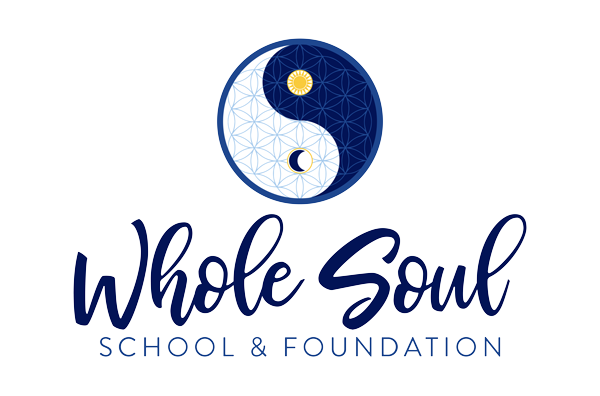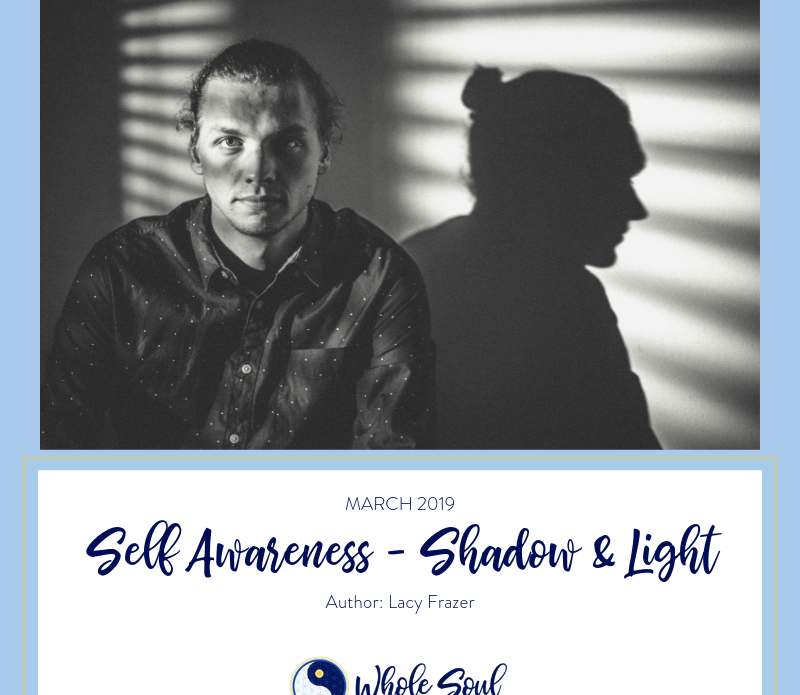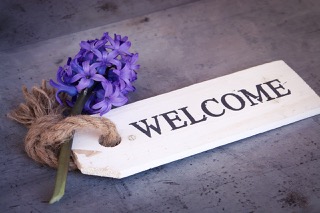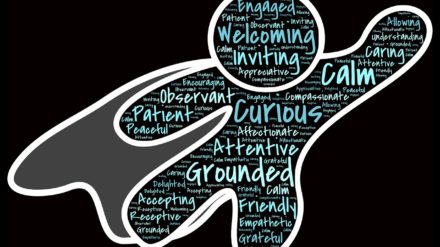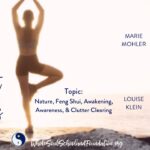March 2019
Self-Awareness: Integrating Shadow and Light
By Lacy Frazer
Over the last two months, we have focused on the conditioned self and its master, the Ego. Why is this? It certainly is not because it is fun to discuss the masks we wear, the defensive arsenal we carry, or the sometimes distorted lens through which we see the world. It is not because it feels good to see how we hurt others, project our own pain out into the world, or admit our selfish motivations. Discussing the conditioned self and its master, the Ego, is about shining a light in the dark. Its about bringing into our own awareness our patterns of thought, feelings, and behaviors that are no longer serving us. Its about recognizing that living an authentic life is living a life where ALL of us is “on the table.”
The month of March at WSSF is all about Self Awareness. It is about exploring self awareness, understanding why it is important and how it benefits us, and examining our willingness to increase self awareness. Becoming more aware of our unique patterns of responding to the world, interpreting our environment, and interacting with others is crucial to healing old wounds and creating a new and authentic way of being. The journey to the authentic self, the self that lives without masks, defenses, and falsehoods, is both a meaningful and challenging journey that, once embraced, gives a sense of purpose to our lives.
In and of itself, self awareness involves the ability to monitor our emotions and thoughts from moment to moment in an effort to understand ourselves better, and then to proactively manage these thoughts, emotions, and behaviors. While this may sound simple to some, for many it is a difficult feat. For engaging the process of self awareness requires a willingness to receive feedback from others, and engage in self reflection in a variety of ways, including admitting to uncomfortable and sometimes “dark” thoughts and feelings. Moving out of the conditioned, “false” self and towards a positive, authentic, and true self means looking at all sides of our beingness, including our light and shadow aspects. To know our light, we must know our shadow. Our shadow is part of the light.
The late author, Debbie Ford, describes “the shadow” as all the parts of ourselves that we deny, hide, or reject. Carl Jung, the famous Swiss psychologist describes the shadow as the part of ourselves we would rather not be. If the path of self awareness leads to authenticity, then living authentically can only be achieved by gaining awareness of both our light and shadow traits. So how do we do this?
I think it is very important to discuss several issues that often prevent us from knowing our true selves. The first is our fast-paced world that is laden with distractions. We are often operating on auto-pilot as we negotiate our daily lives. We are conditioned to dwell in the past or worry about the future, and neither timeline informs us very much about ourselves in the present moment. Thus our awareness of self tends to be skewed because it is not based in real time. A second issue that prevents self-awareness is the variety of cognitive biases or judgments that we develop over time through social conditioning. We learn early in life about what constitutes right and wrong and good and bad in our unique world, and we develop an identity based in comparison to others, as opposed to who we are authentically and innately born to be. Some say that what we judge in others . . . are aspects of ourselves that we do not want to know about or see.
Now that we have named some important factors that serve to prevent self awareness, we are better prepared to step into creating the positive and supportive conditions that will allow us to gain this greater self awareness we seek.
- Listen with an open heart to consistent feedback from others in your life. The relationships and communications you have in your life are a mirror to you of you. They mirror the aspects and patterns in you that make you feel good about who you are, and they also mirror the aspects and patterns in you that you might otherwise deny, project, or attempt to diffuse responsibility for. This daily feedback loop and mirroring often reveals clues about our light and shadow aspects, especially our negative thought, feeling, and behavior patterns that tend to usurp the authentic and happy life many of us seek.
- Learn your triggers. A trigger is a person, situation, or condition that ignites a negative emotional response in you and that may prompt a certain reaction. Knowing your triggers leads to increased self awareness, and the ability to manage your own emotions and better support what it is you uniquely need around those issues in your current experience . . . so that you can more consciously choose your emotional response and level of engagement with those triggers, now and in the future.
- Do not judge your feelings. If you allow feelings to simply be what they are, without judgements and labels, you are more likely to increase your ability to use them as a helpful guidance system . . . in order to better understand them, their origins, their impact on your perceptions, and their essential role in your life. This is self-awareness.
- Practice the art of witnessing the self. By rising above yourself and looking down on your life in general, you are able to witness patterns and reactions from a birds eye view perspective. This can help to neutralize the “charge” or reactivity that our emotions often launch inside us in response to particular people, conditions, or experiences, and grant us a greater grace and peace in the unfoldment of our lives. Witnessing our lives in this way can make our experiences less personal (especially negative experiences), more insight oriented, and more illuminating overall.
- Monitor or check yourself, especially when under stress. Our external environment often reflects our internal environment. Pay just as much attention to what is going on outside, as it may inform you about what is going on inside. Cultivating this ability to tune in to ourselves and to monitor our feelings and perceptions in any given moment goes a long way in grounding our awareness, neutralizing old unhealthy response patterns, and supporting our desires to more consciously choose who we show up to be versus who we unconsciously and automatically express ourselves to be by default.
- Practice present moment awareness. Being present in our every day lives is a gift. There are many methods to engage this daily practice and that feel good to you. The key is to summon the courage and commitment to prioritize it in your life. A great deal of positive energy flows from and through people who cultivate conscious ways to live more in the present moment.
- Make conscious and deliberate choices in the moment. Expand that present moment awareness to inform and guide you in making better and more conscious choices, that take into consideration more of the “all of you” that you truly are and that better serve your Greater Good, or we would say, your Highest Good.
Overall, the more we are willing to pay attention to and “own” our weaknesses in addition to our strengths . . . the more we can become willing to witness and become aware of our shadow traits and judgements in addition to our talents, our light, and what we enjoy and embrace about ourselves, the more whole we feel and the farther down the road we travel to living an authentic and happier life! Practicing these skills on a daily basis creates progress, and this leads many of us into the positive movement and encouraging experience of the greater awareness we truly seek!
